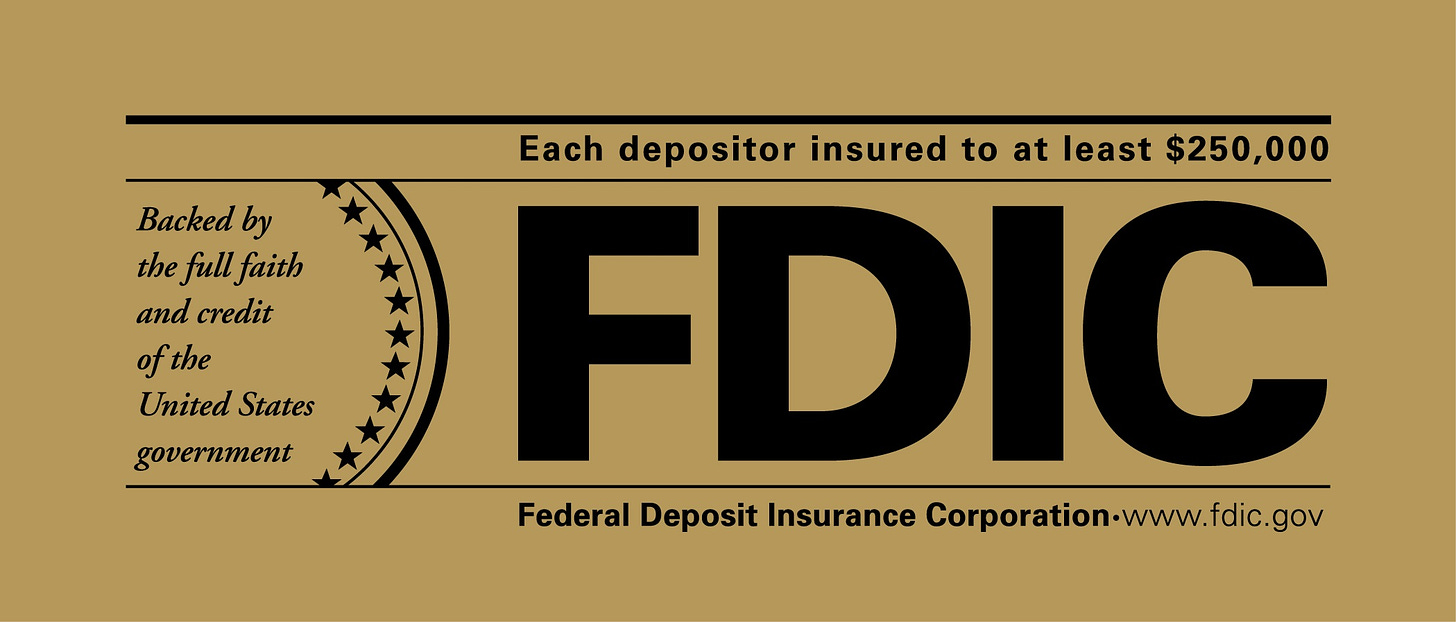Bank Failures Bring FDIC to the Rescue
A well-funded independent agency is tasked with protecting depositors should US banks collapse
They are perhaps the two most feared words for regulators of the financial industry: Bank run.
And that is what happened last week when depositors, during a single day, withdrew $42 billion from California-based Silicon Valley Bank (SVB), leaving it with a negative cash balance of a billion dollars.
“This was the first Twitter-fueled bank run,” is how Republican Representative Patrick McHenry, chair of the House Financial Services Committee, described the tsunami of withdrawals.
Depositors and others began speculating on social media about the bank’s health after CEO Greg Becker sent a letter to shareholders on March 8, revealing a loss of $1.8 billion on the sales of U.S. treasuries [debt obligations issued by the government to raise cash] and mortgage-backed securities. Becker outlined his quest to find more than $2 billion to stabilize the bank.
The letter was the catalyst for the second-largest failure of a financial institution in U.S. history and the first such collapse since an economic recession in the country 15 years ago.
As SVB was sinking, regulators in the state of New York suddenly shut down Signature Bank, known as friendly to the unstable cryptocurrency industry, after panic withdrawals there totaling $10 billion brought it to the brink of insolvency.
Some of Signature Bank’s biggest customers were the top crypto exchanges, which individually had hundreds of millions of dollars in deposits.
The bank runs threatened to expand, with individuals across the country whose deposits were more typically in the thousands of dollars and not millions of dollars wondering if their money was safe. Regional banks were especially vulnerable as their stock prices plummeted.
“If the damage had spread across our financial system, the deposits and savings of tens of millions of families and small businesses could have been at serious risk,” Majority Leader Chuck Schumer said on the Senate floor Tuesday.
The government corporation Federal Deposit Insurance Corporation (FDIC) stepped in with unprecedented action.
Most bank customers know the FDIC from its logo displayed at branches with the written assurance: “Each depositor insured to at least $250,000.” Such a limit is likely to cover the potential losses of most individual depositors in America, but Silicon Valley Bank’s well-heeled customers were high-tech startups and entrepreneurs with far larger deposits.
The FDIC decided that the customers of SVB and Signature would be made whole, no matter how much money they had in either of those banks. This restored consumer confidence, and there have been no additional runs on American banks. But the decision was perceived by some as a bailout for the wealthy.
“No losses will be borne by the taxpayers,” President Joe Biden said on Monday.
That is technically correct, as the FDIC is cashing out depositors from a pool of money that all insured banks are required to pay into. But “it is most definitely a bailout,” said Thomas Hoenig, distinguished senior fellow at George Mason University’s Mercatus Center and a former vice chairman of the FDIC.
“This is where the market discipline breaks down,” Hoenig said.
On its website, the FDIC touts its track record: “No depositor has ever lost a penny of insured deposits since the FDIC was created in 1933.”
The FDIC was formed as an independent agency during the Great Depression after a wave of bank runs led to the failure of thousands of financial institutions in the early 1930s, wiping out the savings of many Americans at a time of high unemployment.
“The FDIC was considered pretty radical at the time,” Hoenig told me on Tuesday evening. He noted that even President Franklin D. Roosevelt initially was uneasy about setting up a deposit insurance fund because of concern “about the moral hazard issue that people would not pay attention to what a bank was doing.”
A sister organization, the Federal Savings and Loan Insurance Corporation, was set up to protect depositors at non-commercial banks. The FSLIC and its parent agency, the Federal Home Loan Bank Board, eventually went bankrupt and were dissolved in 1989. The FDIC now is available to ensure those smaller thrift institutions, while the government-backed National Credit Union Administration, a successor to the Bureau of Federal Credit Unions, was established in 1970 to exclusively protect those depositors.
An FDIC bankruptcy “is always a possibility,” according to Hoenig. But the FDIC effectively has a line of credit from the U.S. Treasury it could access if there were to be massive bank failures and it ran out of money.
Right now, Hoenig noted, the FDIC has $100 billion in its fund. But that is against about $20 trillion in banking deposits. Hoenig cautions, “You really don’t want to be bailing out everyone every time, or you might as well just make these institutions public utilities.”
[[ Read this at VOA News: https://www.voanews.com/a/bank-failures-bring-fdic-to-the-rescue/7005813.html ]]





